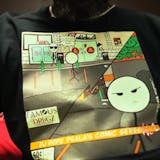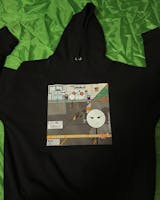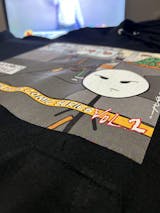Dtf printing technology contributes significantly to the printing service for the clothing industry. This printing service is specially prepared for customers in various areas, from the quality of the prints to their variety. Dtf printing technology, which is a new revolutionary feature in the custom clothing industry, creates innovation in printing types thanks to many features. Clothing and fashion accessories in the custom clothing industry are combined with special designs to attract the attention of customers.
These designs are transferred to clothes and textile products with the dtf printing method, and a quality print is provided. Dtf transfer technology covers many advantages for the special clothing sector. Especially vivid and extraordinary designs combine with various fabrics and make room for special designs. With these special designs, the customer feels more special and considers different product varieties. Different and special designs combined with the classic clothing sector and dtf technology provide successful results.
Attractive and Interesting Designs
The prints on the clothes are important for customers. Sometimes customers who like ordinary and simple designs may request an interesting special design that appeals to the eye for events or crowded environments. Various print types are created with dtf printing to meet all these design needs. An attractive clothing design is obtained by applying the prints with the right technique with ready-to-print clothing fabrics, print and fabric harmony, and details. Fabric companies that offer a wide range of products thanks to different fabric types offer very useful products for the printing sector. These products are printed and delivered to the customer flawlessly.
How Effective is Dtf Transfer on Fabric?
Dtf prints have various application areas. Fabric quality is very important on the surfaces to be applied. Effective steps are followed to ensure that the print is flawless by adjusting the material usage and printing steps correctly in the print to be transferred to the selected fabric surface. In dtf print transfer, it is necessary to use quality materials to create the right amount of prints on the fabric and film layer. It is necessary to choose quality fabric for the clarity of the print transfer. In this way, it is possible to get quality results and see the positive effects of successful print transfer. With print transfer, the clarity, quality and liveliness of the print are revealed and a good performance is achieved.
Dtf Prints in Developing Technology
The development of technology benefits not only devices but also the industry. Various sectors make an effort to provide better service to buyers by taking advantage of the products of developing technology. Similarly, in dtf printing technology, an increase in product and service quality occurs thanks to the developing technology. Products developed through various projects and different products offer customers the opportunity to have a better experience. Designed clothes produced for employees in special workplaces with dtf printing technology, special designs upon request and special productions with various fabrics are carried out. Thus, different designs emerge in different and solution-oriented projects.
Innovations in the printing sector bring various services for customers. Special designs and designs that serve a purpose are presented in a wide area and prepared to meet the demands of customers. Products prepared with dtf printing go through various steps and are delivered to the buyer in the most ideal form. The principle of perfection is followed in the printing stages, which are frequently followed during the production phase. The speed of designs with the devices and machines that are the benefits of technology, customer demand and live prints take their place in production together. The increasing fabric variety directs the printing and offers new alternative innovations and diversity to customers.








